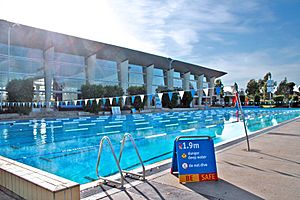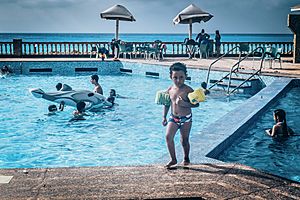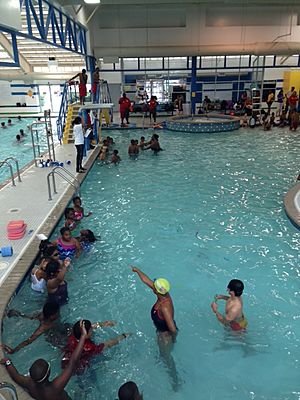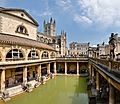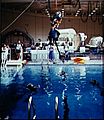Swimming pool facts for kids
A swimming pool is a tank or large basin that is filled with water and intended for recreational or competitive swimming or diving. Pools are also used for other bathing activities, such as playing, wading, water exercising, floating on inner tubes, or cooling off on hot days. The chemical chlorine is usually used to killing germs and algae. Sometimes sea water is also used to maintain pool algae free.
Types of pools
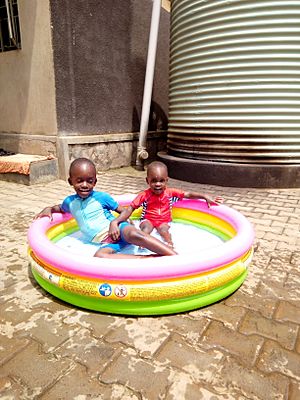
There are different types of swimming pools. The most common pool styles are play pool, freeform pool, geometric pool, lap pool, diving pool, infinity pool, spool, and the perimeter overflow pool.
- The play pool: A play pool is quite shallow (Typically no deeper than five feet). Play pools can have a fun design, and are often created in different shapes.
- The freeform pool: A freeform pool is built generally to imitate a natural lagoon pool or small oasis. It will have a natural uneven shape, and will often have features around it like rocks and waterfalls to compliment the naturalistic style.
- The geometric pool: A geometric pool has even lines and features. Usually built in a rectangular shape, this pool is considered the “traditional swimming pool” style.
- The lap pool: Lap pools are built so that people can swim laps for health and fitness. They tend to be long and narrow, usually over fifty feet long.
- The diving pool: These pools are built deep; diving pools are usually six to eight and a half feet deep with a diving board or platform.
- The infinity pool: Infinity swimming pools (also referred to as infinity edge swimming pools, or negative edge pools) give the illusion that the edge of the pool extends to the horizon. This gives an optical illusion that the pool “has no edge”, and looks as if the pool goes on to infinity.
- The spool: The word "spool" is a combination of the two words spa and pool. The spool is a smaller pool, more commonly seen as a large spa. Spools are often around 12 to 14 feet squared.
- The perimeter overflow pool: This pool is created by having the pool surface’s water level at the same level as the surround of the pool. The water of the pool drains into a notched perimeter around the pool.
Images for kids
-
Racing pool at the University of Minnesota
-
Olympic swimming pool and starting blocks used for the 2006 Commonwealth Games in Melbourne, Australia
-
Modern replica ancient Roman baths in Bath Spa, England, UK
-
Cairns Lagoon, a public swimming pool in Australia
-
Rooftop pool in Manhattan
-
An ocean pool at Coogee in Sydney, Australia
See also
 In Spanish: Piscina para niños
In Spanish: Piscina para niños


